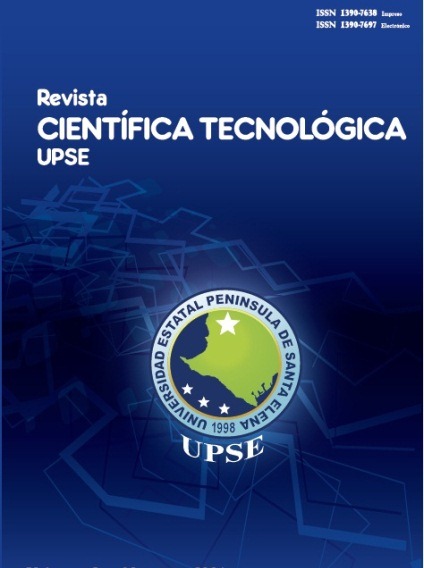Effect of Lessonia Trabeculata algae extraction, Villouta and Santelices 1986, on the macrobenthos in Marcona, Peru
DOI:
https://doi.org/10.26423/rctu.v2i2.64Keywords:
Macroalgae, macrobenthos, holdfastsAbstract
Macroalgae are dominant organisms in cover and biomass in cold and temperate seas of the rocky shores worldwide. The overexploitation of the resource endangers two important aspects: 1) it is allowing no proper renewal of natural pastures and 2) be affecting macrobenthic communities. The aim of this work was determined the effect of the removal Lessonia trabeculata on the richness and abundance of macrobenthos associated to algae in Marcona. Sampling in 02 sectors (Lobo Fino and Basural), in each 03 transects with 03 stations distributed in depth intervals were located was performed: 5-10 m, 10-15 m and 15-20 m, obtaining a total of 18 holdfasts as samples and 9 between disk. A total of 5399 organisms grouped in 71 different species were recorded, identifying 5369, corresponding to 31 species of Phylum Annelida, 17 to Mollusca, 15 to Crustacea, 4 to Equinodermata, 1 to Tunicata, 1 to Nemertea, 1 to the Pycnogonida and 1 to the ichthyofauna of the sector. The species richness (S) on the discs varied between 13 and 37 being the P.3.2 and P.3.3 substations of Lobo Fino with higher values, while among the S evidenced between disks varies from 8 to 24, with higher registration of I.4 station of Basural. The cluster analysis performed with PRIMER 6.0 gives us the result that between the substations of Basural exists a similarity of 61% being B.4.3 substation which differs in one group the highest species richness of polychaetes and between substations of Lobo Fino to 62% L.1.1 and L.1.2 substations are separated by differences in diversity of molluscs and crustaceans.
Downloads
References
Álamo, V.V.; Valdivieso, V. 1987. Lista sistemática de moluscos marinos del Perú. Boletín extraordinario Instituto del Mar del Perú. 205 p.
Barnard, J.L. 1954. Amphipoda of the family Ampeliscidae collected in the Eastern Pacific Ocean by the Velero III and Velero IV. Allan Hancock Pacific Expeditions 18 (1): 1-137.
Barnard, J.L. 1960. The amphipod family Phoxocephalidae in the Eastern Pacific Ocean with analyses of other species and notes for revision of the family. Allan Hancock Pacific Expeditions 18 (3): 1-105.
Cancino, J. M. &Santelices, B. 1984. Importancia ecológica de los discos adhesivos de Lessonia nigrescensBory (Phaeophyta) en Chile central. Revista Chilena de Historia Natural. 56: 23-33.
Chirichigno, N. 1970. Lista de Crustáceos del Perú (Decápoday Stomatopoda). Instituto del Mar del Perú. Informe No. 35.
Fauchald, K. 1977 The polychaete worms. Definitions and keys to the orders, families and genera. Natural History Museum of Los Angeles Country, Science Series 28: 1-188.
Hobson, K.D.; Banse, K. 1981. Sedentariate and archiannelid polychaetes of British Columbia and Washington. Canadian Bulletin of Fisheries and Aquatic Sciences 209.
IMARPE (Instituto del Mar del Perú). 2010. Informe: Evaluación poblacional de Lessonia trabeculataVillouta & Santelices, 1986, entre El basural y Yaryarina, San Juan de Marcona. Unidad de Investigaciones en Biodiversidad. Laboratorio Costero de Pisco. 11 p.
IMARPE (Instituto del Mar del Perú). 2012. Informe: Estudios sobre Macroalgas Pardas en el Sur del Perú 2011-2015. Volumen extraordinario. 200 p.
Lancelloti, D. A. &Vásquez, J. A. 2000. Zoogeografía de macroinvertebrados bentónicos de la costa de Chile: contribución para la conservación marina. Revista Chilena de Historia Natural. 73 (1):99-129.
Marincovich L. 1973. Intertidal mollusk of Iquique, Chile. Natural History Museum Los Angeles County Science Bulletin 16: 1-49.
Moore, PJ. 1971. The nematode fauna associated with holdfast of kelp (Laminaria hyperborea) in North East Britain. Journal of Marine Biology Association U.K. 51: 589-604
Paredes C. &Cardozo F. 2007. La Familia Calyptraeidae en el Perú (Gastropoda: Caenogastropoda). Rev. Perú. biol. 13(3): 177 –184. ISSN 1727-9933.
Vásquez, J.A &Santelices, B. 1984. Comunidades de macroinvertebrados en discos adhesivos de Lessonia nigrescensBory (Phaeophyta) en Chile central. Revista Chilena de Historia Natural 57:131-154
Vásquez, J. A. 2009. Informe Final del Estudio de Investigación de Poblaciones y de las condiciones de viabilidad ecológica de las actividades extractivas de algas pardas e invertebrados en la zona costera sur, en apoyo a la investigación y desarrollo del IMARPE. Proyecto UE-Perú/PENX. Lima, Perú. 90 p.
Villouta, E. &Santelices, B. 1986. Lessonia trabeculatasp. nov. (Laminariales, Phaeophyta), a new kelp from Chile. Phycologia 25:81-86
Downloads
Published
Issue
Section
License
El titular de los derechos de autor de la obra, otorga derechos de uso a los lectores mediante la licencia Creative Commons Atribución-NoComercial-CompartirIgual 4.0 Internacional. Esto permite el acceso gratuito inmediato a la obra y permite a cualquier usuario leer, descargar, copiar, distribuir, imprimir, buscar o vincular a los textos completos de los artículos, rastrearlos para su indexación, pasarlos como datos al software o usarlos para cualquier otro propósito legal.
Cuando la obra es aprobada y aceptada para su publicación, los autores conservan los derechos de autor sin restricciones, cediendo únicamente los derechos de reproducción, distribución para su explotación en formato de papel, así como en cualquier otro soporte magnético, óptico y digital.












